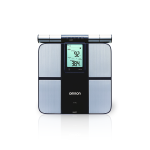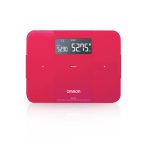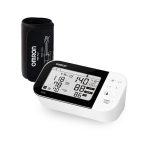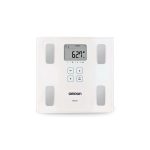Child BMI: The Impact of Childhood Obesity on Long-Term Health and How to Monitor It
August 2, 2024 2024-09-20 10:02Child BMI: The Impact of Childhood Obesity on Long-Term Health and How to Monitor It

Child BMI: The Impact of Childhood Obesity on Long-Term Health and How to Monitor It
Childhood obesity is a significant health concern worldwide, with implications that extend well into adulthood. One crucial aspect of monitoring and managing this issue is understanding and tracking a child’s BMI (Body Mass Index). In this blog, we’ll talk about the impact of childhood obesity on long-term health, how to effectively monitor child BMI, and the tools available to help parents and healthcare providers keep track of this critical metric.
Understanding Child BMI and Its Importance
BMI for children is a simple calculation used to determine whether a child falls into the categories of underweight, average weight, overweight, or obese, based on their height and weight. This index is computed by dividing a child’s weight in kilograms by the square of height in meters.
Body Mass Index is a helpful screening tool because it provides a quick estimate of body fatness, which can be correlated with potential health risks. However, while BMI is helpful, it doesn’t directly assess body fat but serves as a general indicator.
The Effects of Childhood Obesity on Health
The rise in childhood obesity rates is alarming due to its association with numerous long-term health problems. Obese children face an increased risk of long-term health issues such as type 2 diabetes, high blood pressure, and cardiovascular diseases. Additionally, obesity can adversely impact a child’s mental well-being, potentially resulting in problems like diminished self-esteem and depression.
- Type 2 Diabetes: Obesity raises the likelihood of developing insulin resistance, which may result in type 2 diabetes. This condition can cause various complications, including cardiovascular disease, nerve damage, and kidney problems.
- Cardiovascular Disease: Excess body fat can result in high blood pressure and cholesterol levels, both of which are risk factors for heart disease.
- Mental Health Issues: Children with obesity may experience bullying and social stigma, which can contribute to emotional strain and mental health issues such as anxiety and depression.
How to Monitor Child BMI Effectively
Monitoring a child’s BMI regularly can help in the early identification of potential weight issues and allow for timely intervention. Here are some practical ways to monitor and manage BMI by age:
- Regular Check-Ups: Schedule routine visits with a paediatrician who can track your child’s growth and BMI over time. This helps identify any significant changes and address them promptly.
- BMI Online Tools: Various BMI online calculators can help parents and healthcare providers assess BMI and interpret the results. These tools often include growth charts that can show how a child’s BMI compares to peers of the same age and gender.
- Body Composition Analysis: Tools such as a body composition analyzer or body fat scale can provide additional insights into a child’s body fat percentage. Omron HBF 375 Body Composition Monitor is an excellent example of a product that helps track body fat and overall body composition. It provides a comprehensive overview of your body composition, including details on visceral fat, skeletal muscle, subcutaneous fat, BMI, resting metabolism, and more, which can be valuable for managing and monitoring a child’s health.
Tools for Monitoring Body Composition
Utilizing the right tools can be incredibly beneficial in effectively monitoring child BMI and managing childhood obesity. Body composition scales and body fat analyzers are designed to provide more comprehensive data beyond basic BMI measurements. Here are some essential tools:
- BCM Machines: A BCM machine (Body Composition Monitor) analyses body composition, including body fat, muscle mass, and water content. These machines provide a detailed report that helps understand a child’s overall health beyond BMI.
- Body Fat Calculator Machine: This device measures the percentage of body fat in relation to total body weight. Monitoring this can help assess the effectiveness of lifestyle changes in reducing obesity.
- Body Composition Scale: Scales that measure body composition provide detailed data on various metrics including factors such as muscle mass, bone density, and body fat percentage. This can be particularly useful in monitoring changes over time.
Conclusion
Tackling childhood obesity necessitates a comprehensive strategy that includes monitoring a child’s BMI and using practical tools to gauge body composition. Regular check-ups with healthcare professionals and advanced tools like the Omron HBF 375 Body Composition Monitor can provide valuable insights into a child’s health. By keeping up-to-date and taking proactive measures, parents and caregivers can more effectively manage and reduce the risks linked to obesity, leading to a healthier future for their children.






